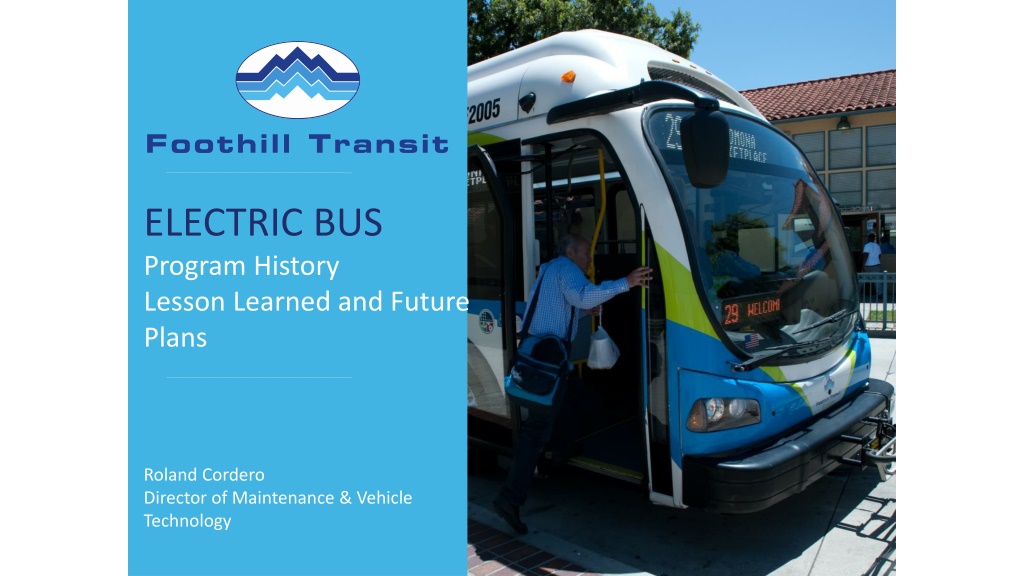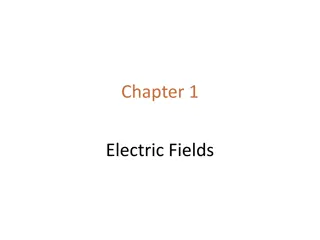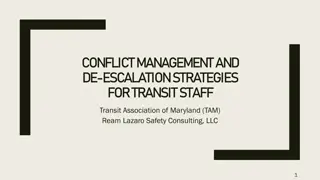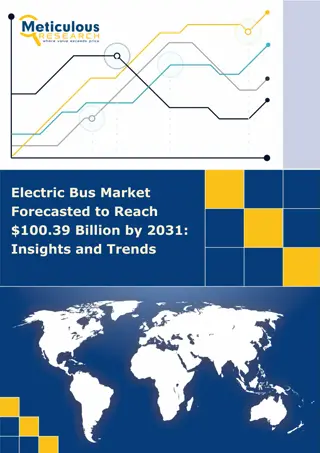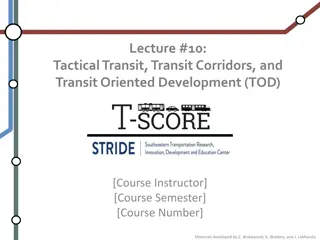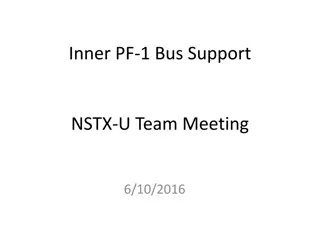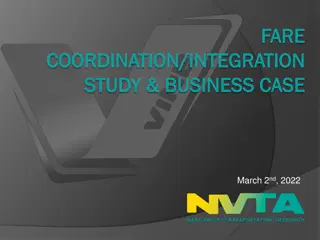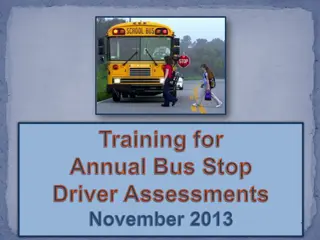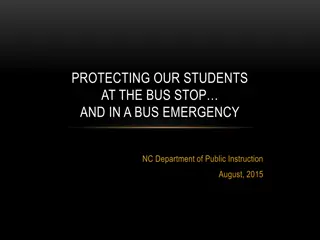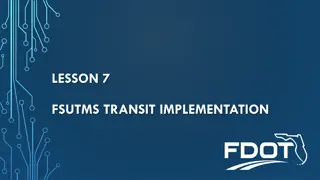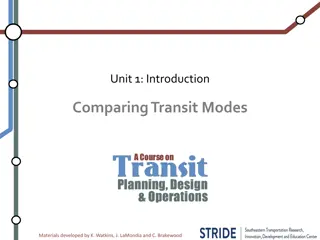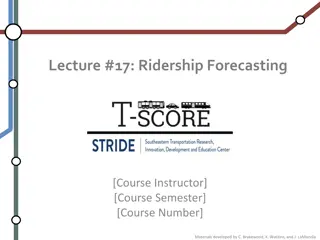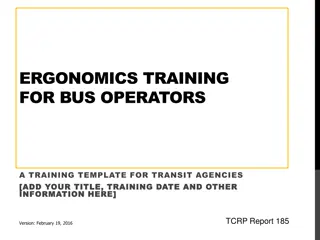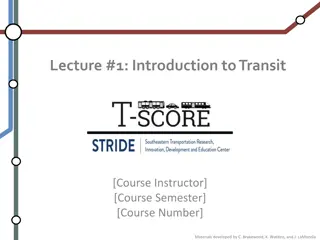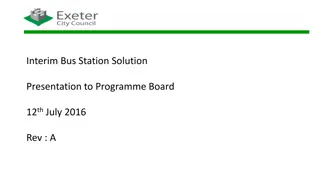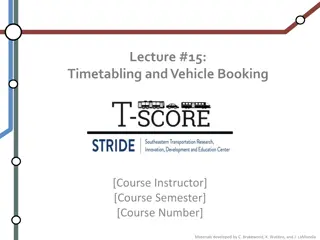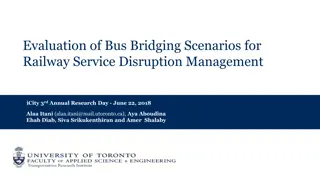Foothill Transit Electric Bus Program Overview
Foothill Transit's electric bus program, led by Roland Cordero, Director of Maintenance & Vehicle Technology, has made significant strides since its inception. With a focus on innovation and sustainability, the program has deployed a fleet of fast-charge and extended-range electric buses across various routes, catering to a wide service area and a large population. The charging infrastructure, including high-power fast-charge stations, has proven successful in supporting the operational needs of the electric buses. Notable milestones, like bus tests for range capability and continuous expansion of electric bus services, showcase Foothill Transit's commitment to advancing clean transportation.
Download Presentation

Please find below an Image/Link to download the presentation.
The content on the website is provided AS IS for your information and personal use only. It may not be sold, licensed, or shared on other websites without obtaining consent from the author. Download presentation by click this link. If you encounter any issues during the download, it is possible that the publisher has removed the file from their server.
E N D
Presentation Transcript
ELECTRIC BUS Program History Lesson Learned and Future Plans Roland Cordero Director of Maintenance & Vehicle Technology
Key Facts about Foothill Transit Fast Facts 327 sq. mi service area, 1.5m service pop. 14.6 Million boardings per year, 40,000/day. 36 local and express routes. 354 CNG buses, 17 electric buses. Innovation is part of our core mission. 2
First 3 buses and fast charge station 2010 12 more fast charge buses deployed 2014 2 40 ft. Proterra fast charge buses 2016 14 extended range buses and charging facilities 2017 Electric Bus Milestones
Current Service 16 FAST CHARGE electric buses Line 291 La Verne Claremont Pomona 7-min charge at Pomona Transit Center 8 buses at peak service In operation since 2010
New Electric Service 14 EXTENDED RANGE electric buses Line 280: Azusa Covina West Covina La Puente Industry Puente Hills Mall 251 miles nominal range Overnight charging at Arcadia Maintenance and Operations Facility On-route charging available at Azusa Intermodal Transit Center (near Gold Line Station)
ABOUT OUR CHARGING STATION One high power fast-charge station with two overhead chargers, sufficient to serve all buses 150,000 charge cycles to-date, and 1.5 million electric bus miles Located at Pomona Transit Center, a central hub with off- street flexibility, safety and security
ABOUT OUR CHARGING STATIONS AITC fast-charge station with two overhead chargers 14 new 40ft. extended-range buses on line 280 Installed adjacent to Gold Line tracks
Bus Tests to Measure Range Capability Four tests on local routes Average 159 mile range (100%->10% battery discharge). Results varied from 149 to 168 miles. Electric Bus Range Test Results Distance traveled (miles) 250 200 150 Express line test, 194 miles (100%->10%) 100 50 0 Test 1 Test 2 Test 3 Test 4 Test 5 Express Test 6 Opp Charge Opportunity charge, 250 miles (100%- >10%) Local Route Express Opp Charge
Current Challenge: Installing Depot Chargers Foothill Transit Arcadia Yard
In-Depot Charging Working with Proterra for 14 plug-in chargers RFP for In-Depot Charging Design
Operating Electric Buses Not an easy task, can be complex and complicated depending on agency size. Operating a small fleet of EBs, 20 or less is easier compared to larger fleet sizes. Have OEMs provide a demo bus over a month period operating buses in actual service to get an idea of how EBs will perform in your service area. Bus operator driving habits, traffic, frequency of traffic lights and bus stops, weather, route topography AC units and heaters can use a substantial amount of battery energy. Range Anxiety
Energy Management Utility rates can be expensive and can sometimes be provided by multiple utility companies. Demand charges can cost as much as 25% of the utility bill. By having more buses operate on a specific route, you can lower the impact of demand charge. Demand charge is based on highest energy used. Spread charging of buses during the day.
Lessons learned In-route charged buses are inflexible. In-route charging stations require off-street installations. In-route charging stations are costly. Requires working with local city planners for plan review and permitting and with contractors and local utility. When installing in-route charging stations you need to have two. It also requires a maintenance contract with the charger station provider. Foothill Transit s approach now is to have extended range buses and charge them in the bus maintenance facility with in-depot chargers. To save space, our preferred approach is to have overhead in-depot rather than pedestal mounted plug-in chargers.
Issues with full fleet electrification Solar panels are inappropriate for energy backup purposes Stationary fuel cells are more reliable
Benefits of Stationary Fuel Cells Reliable Consistent Continuous power Quiet No emissions
Electric Double-Deck Buses First to use technology Increase rider capacity Reduce Greenhouse Gas Emissions Improve Transit
THANK YOU Roland M. Cordero Director of Maintenance & Vehicle Technology rcordero@foothilltransit.org
